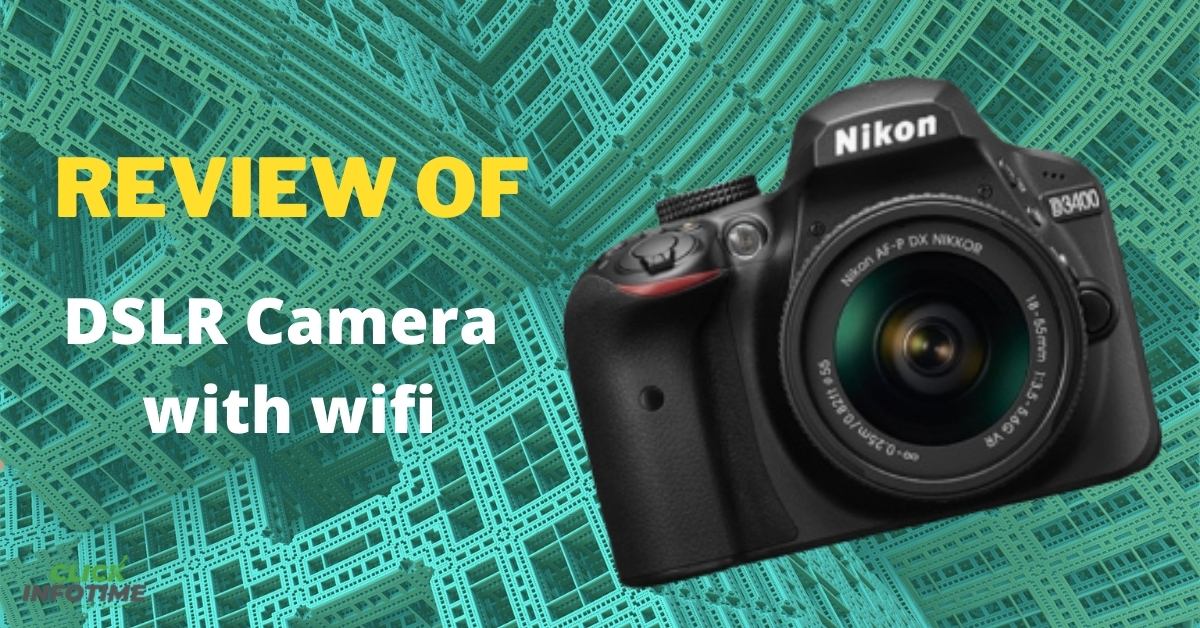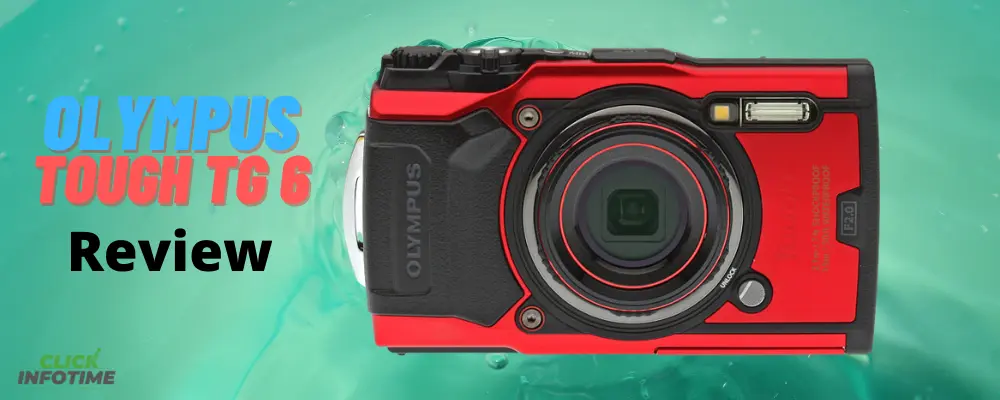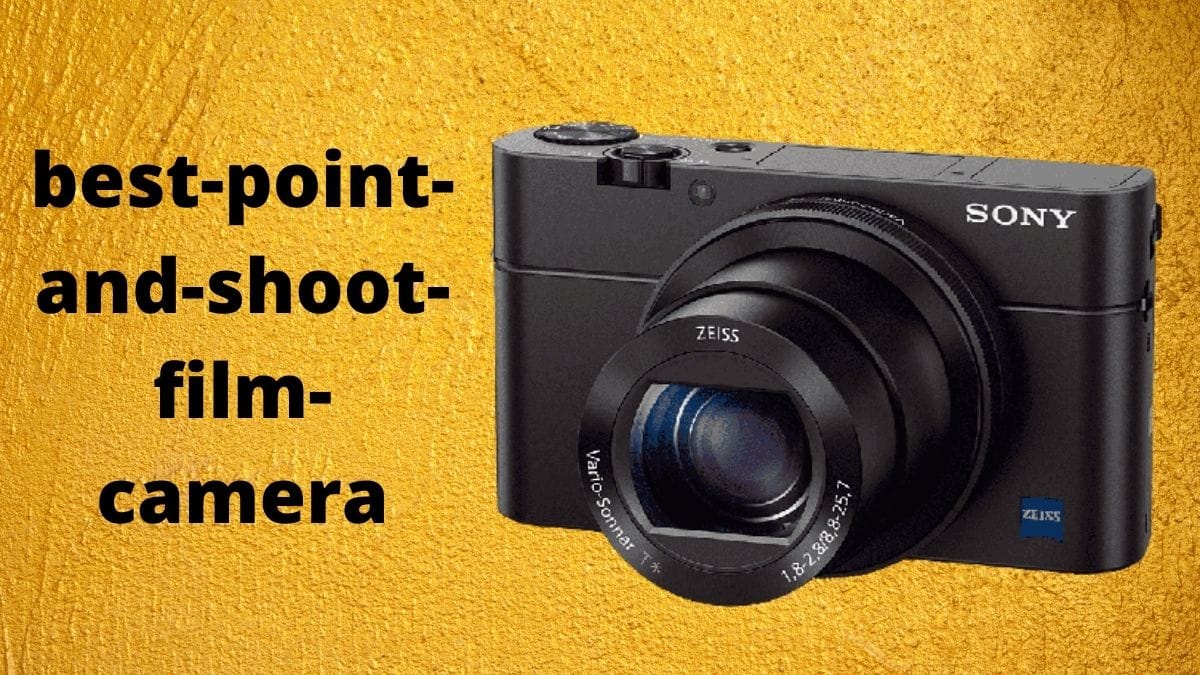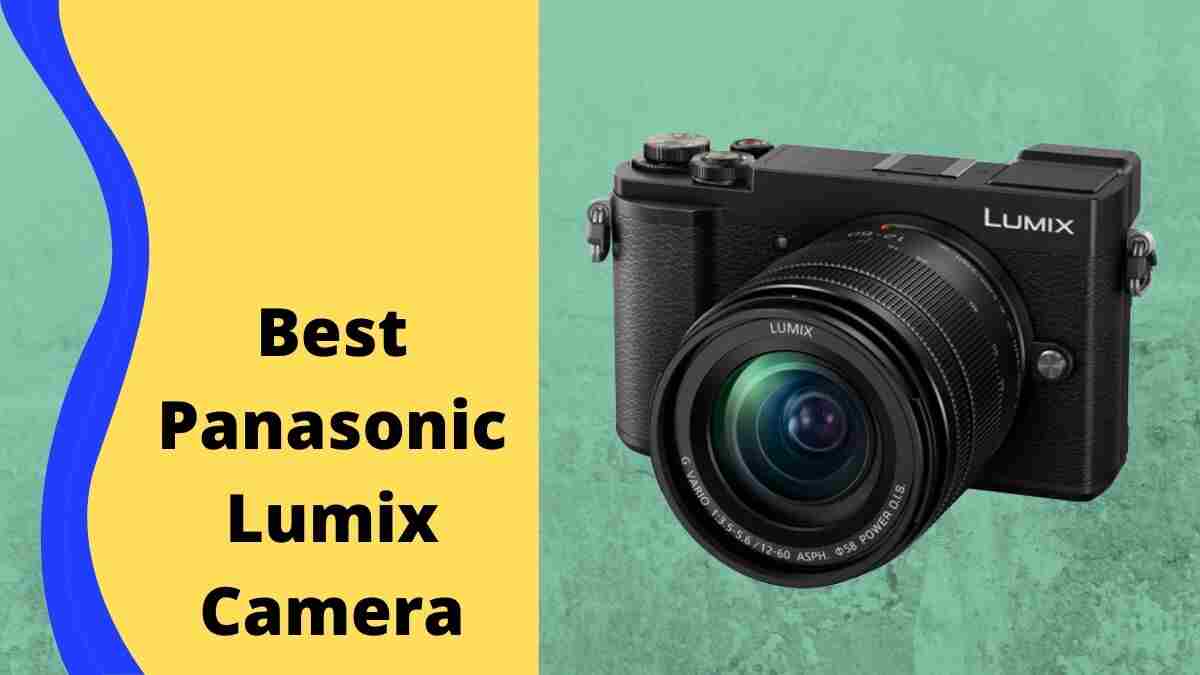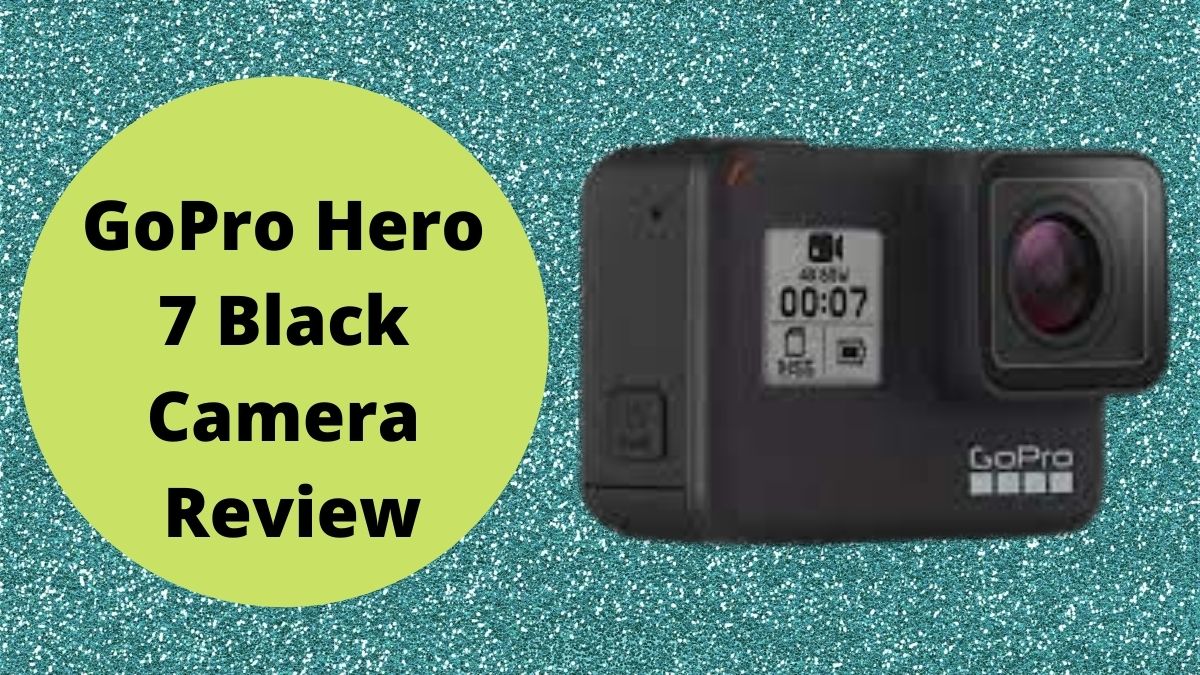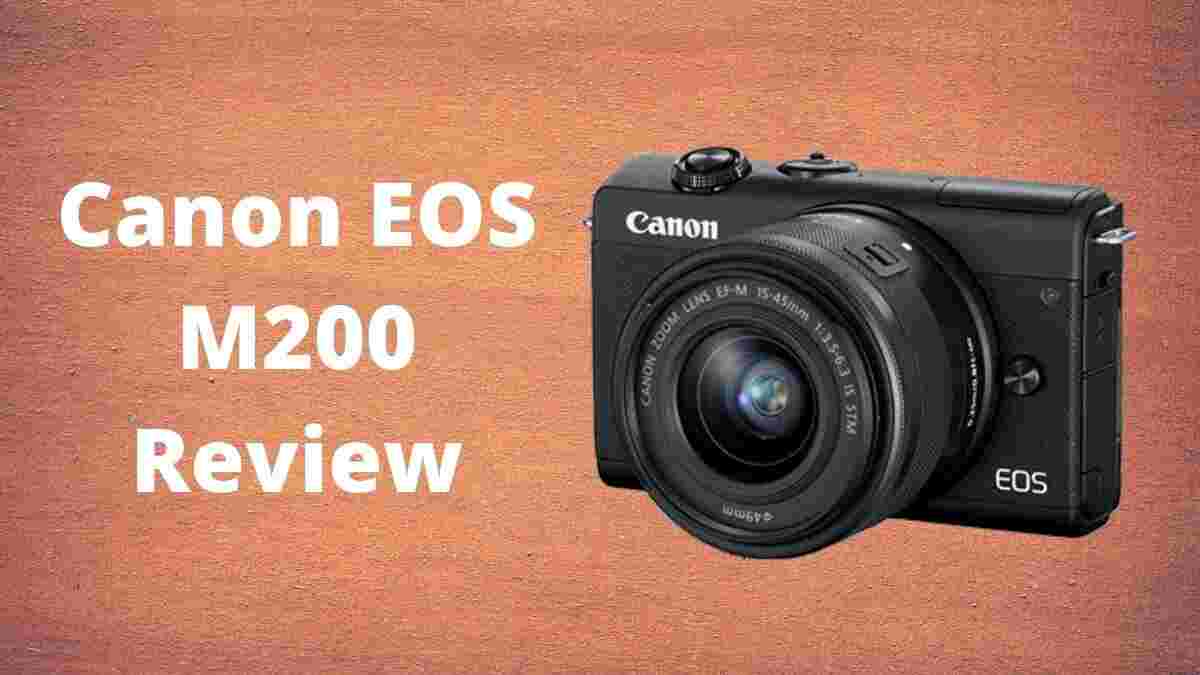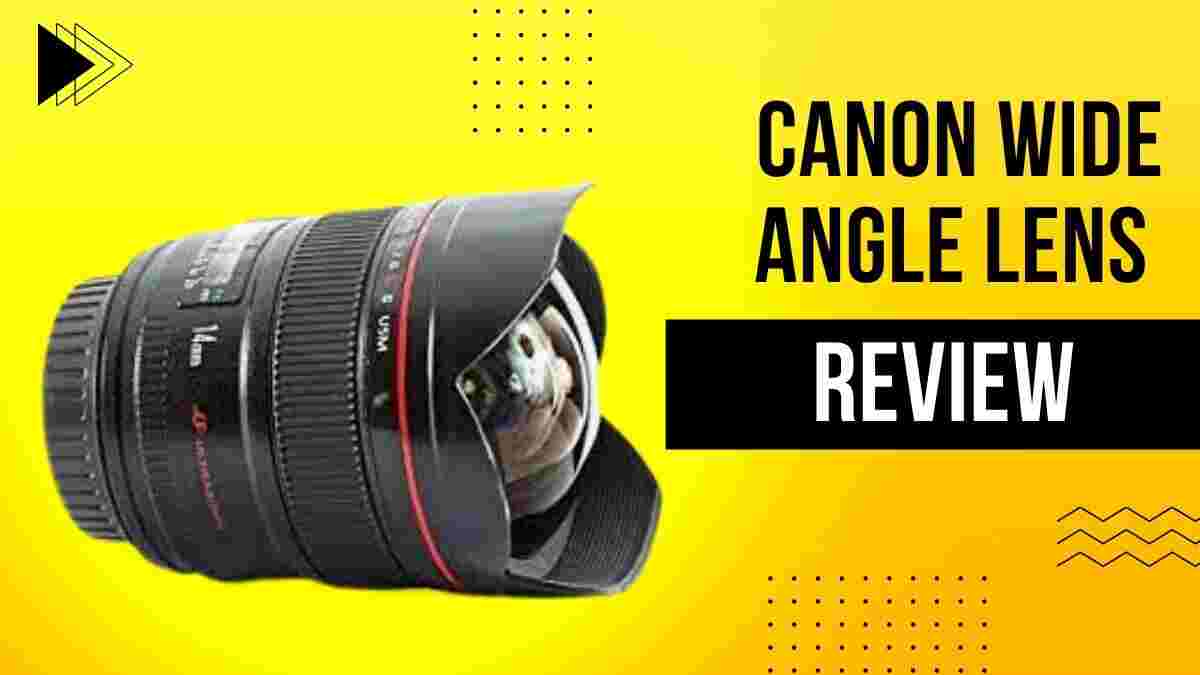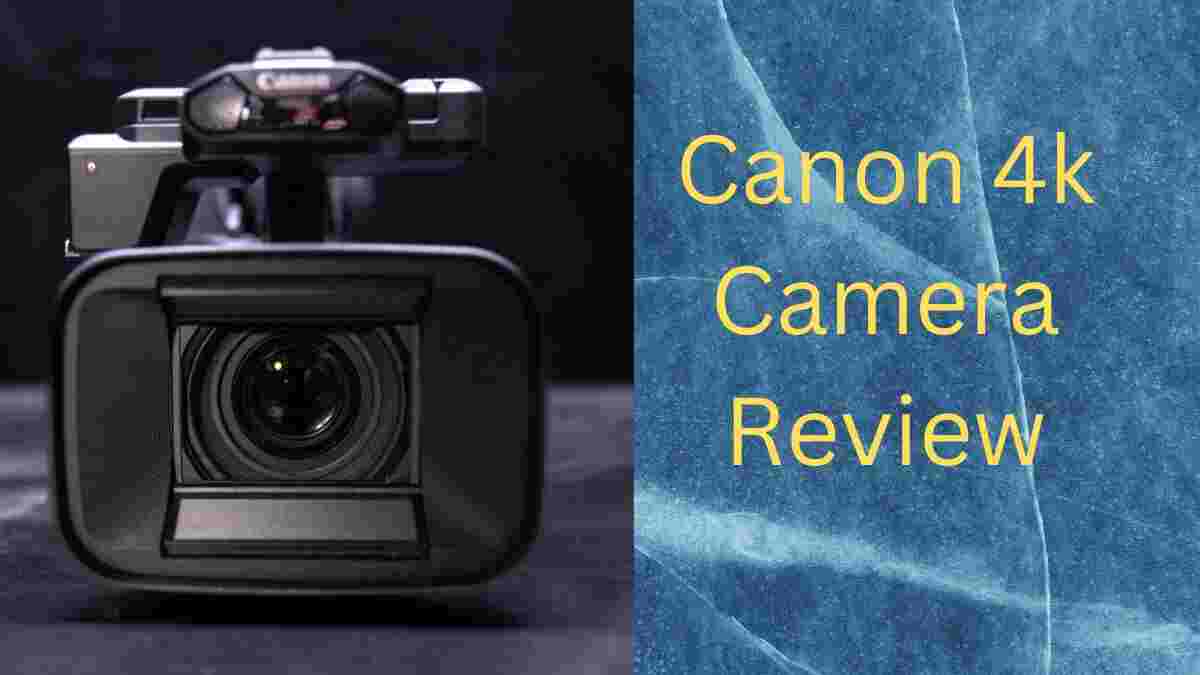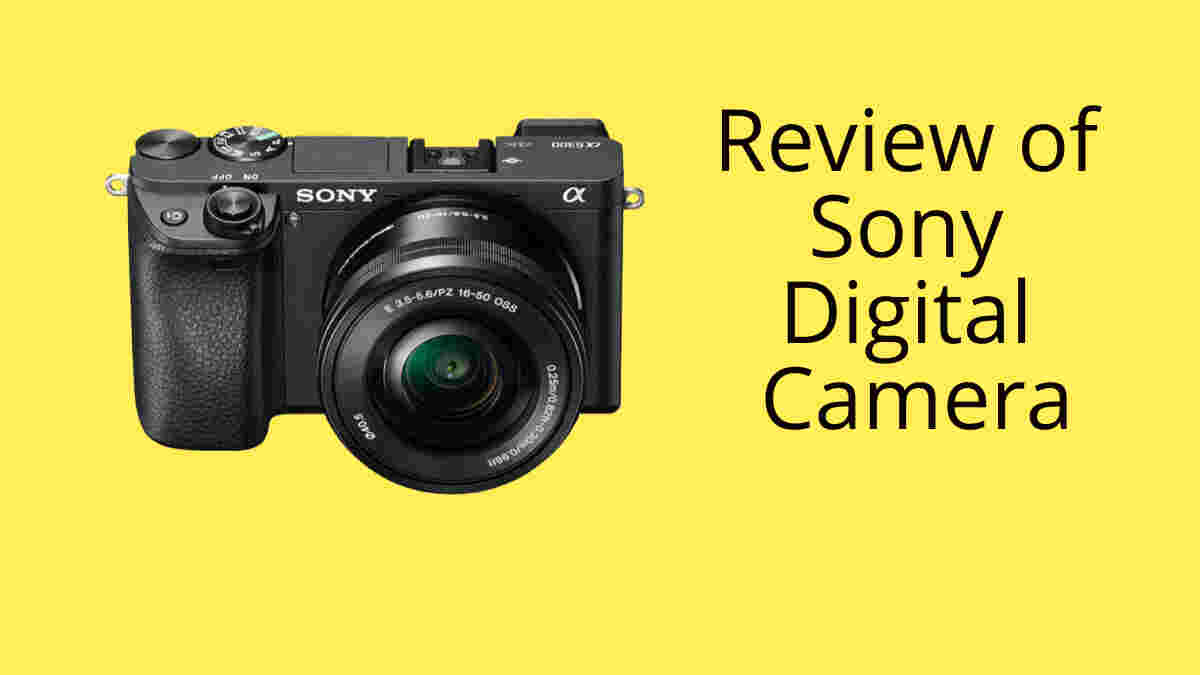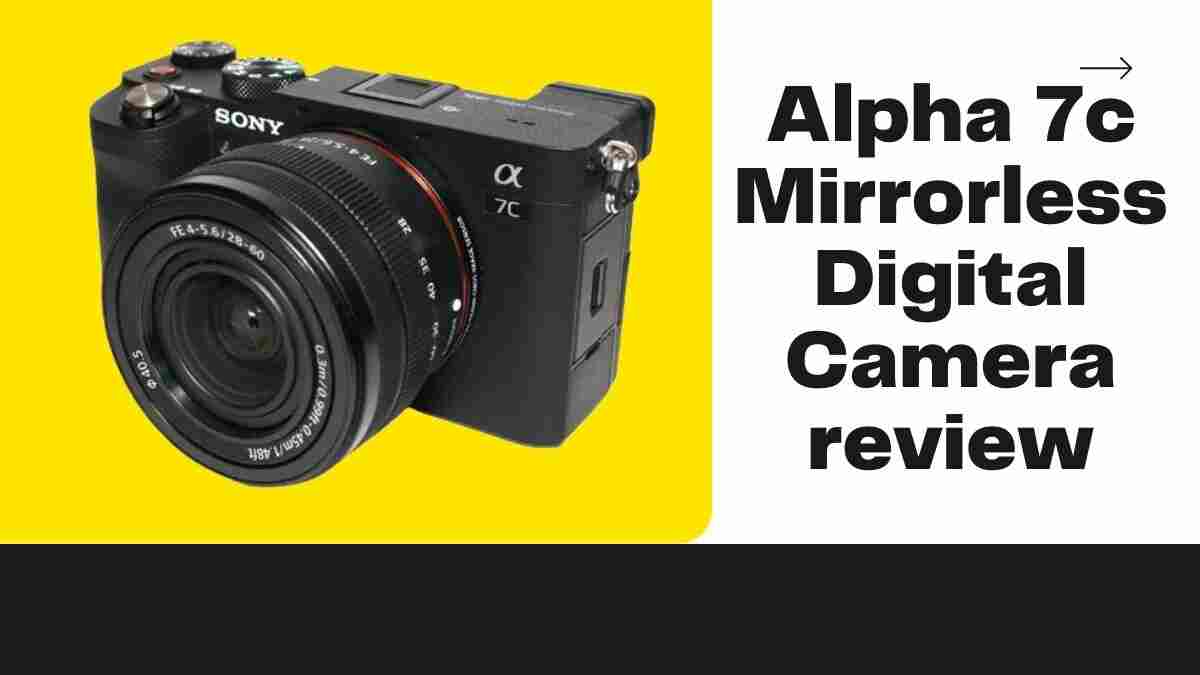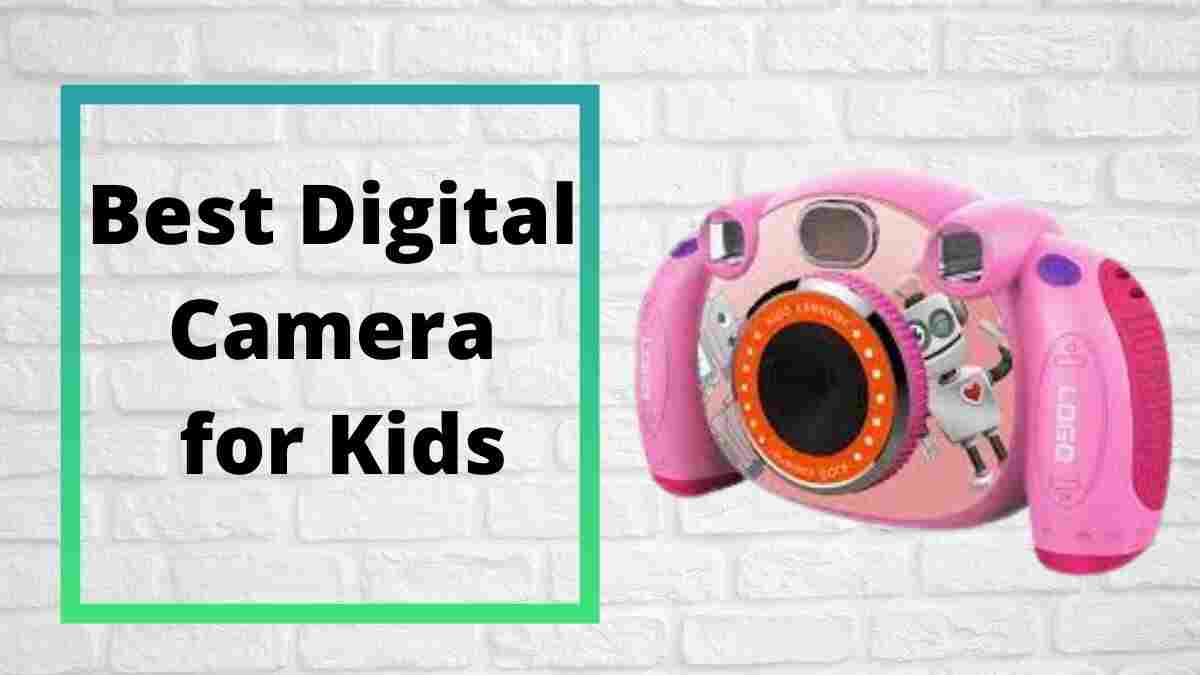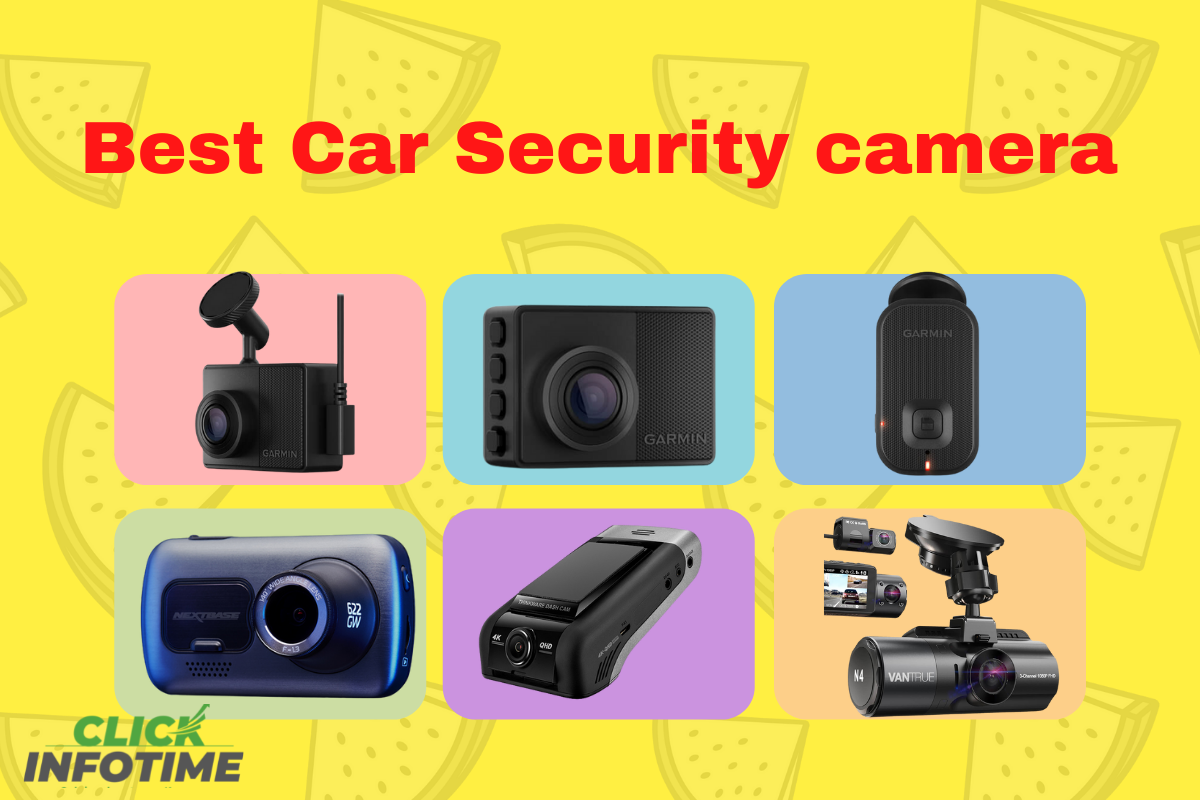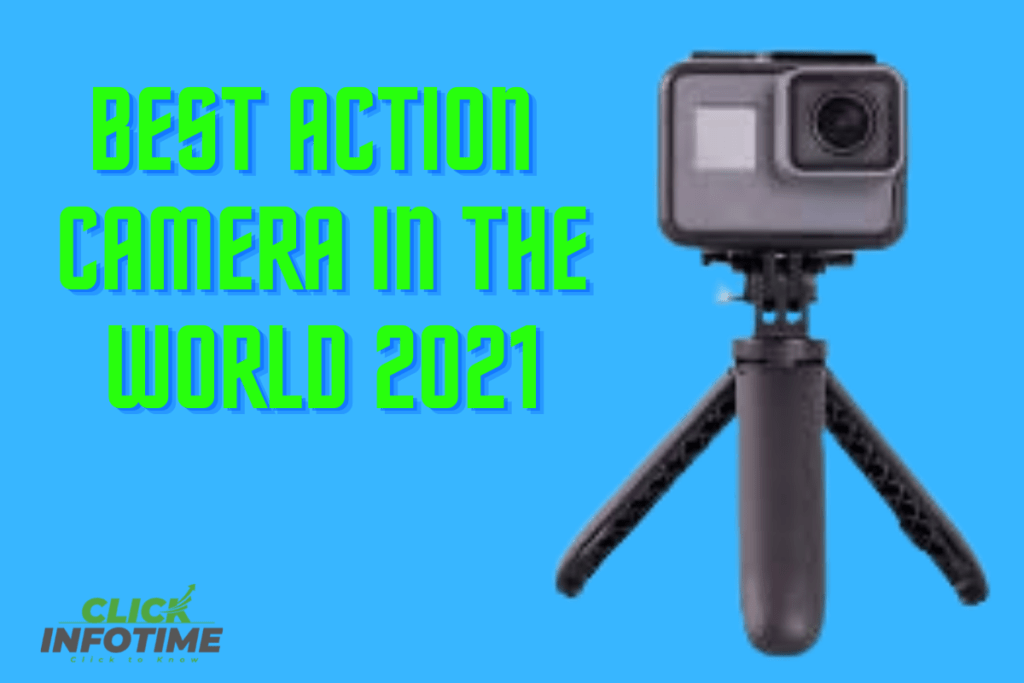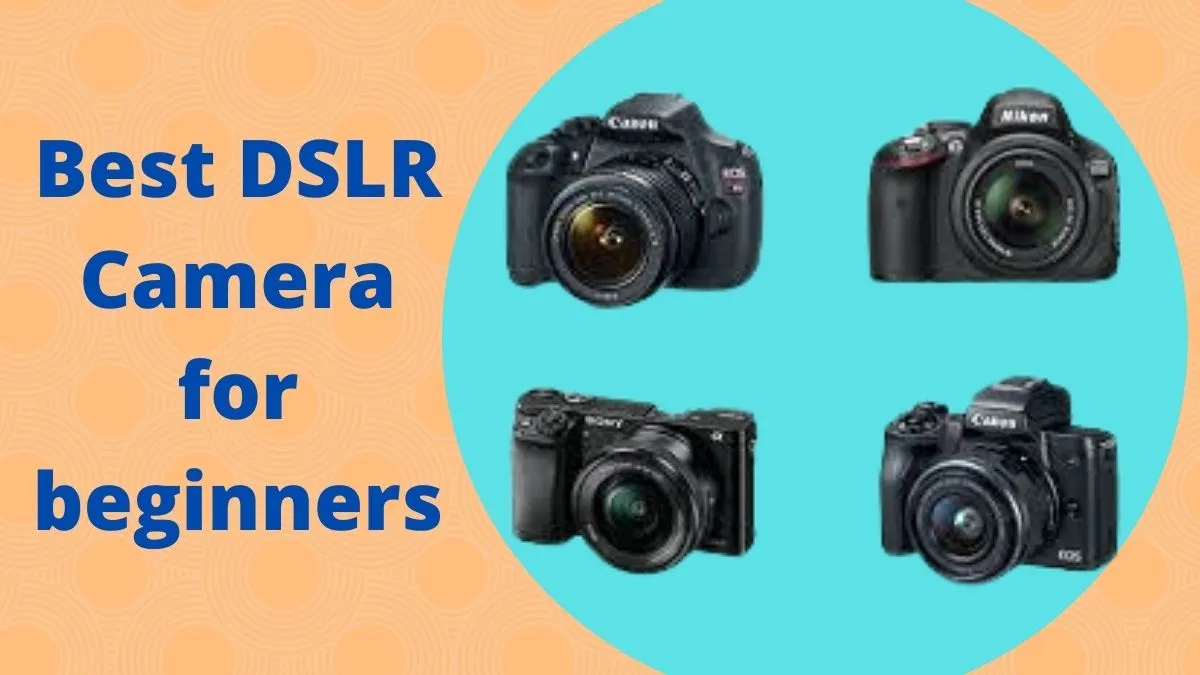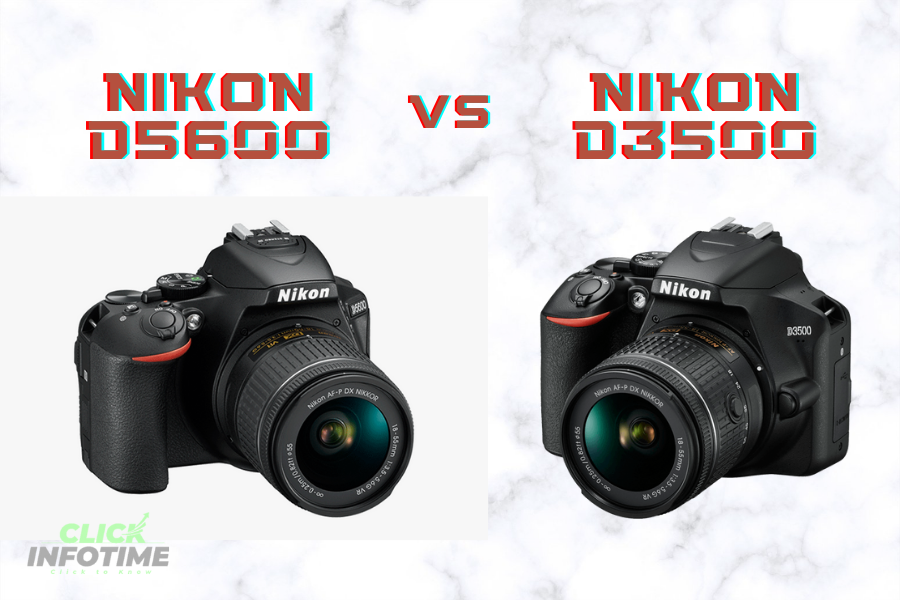
NikonD5600 vs NikonD3500 DSLR Camera Comparison is necessary if you want select the better one. We will demonstrate here Nikon 5600 vs Nikon 35 DSLR Camera Comparison. Beginner photographers face with a difficult decision when comparing the Nikon D3500 and the Nikon D5600. However, since both cameras rank among the best in their class, the 18-55mm zoom lens on the entry-level D3500 model costs less than $500. In addition, an on-screen guide to camera settings is included with the Nikon D3500, making it an excellent choice for first-time photographers.
Nevertheless, the Nikon D5600 costs $200 more and has more advanced features like a rotating touchscreen LCD and a microphone jack. In addition, a more advanced autofocus system may be vital if you’re going to be shooting a lot of sports or action.
NikonD5600 vs NikonD3500: Specs
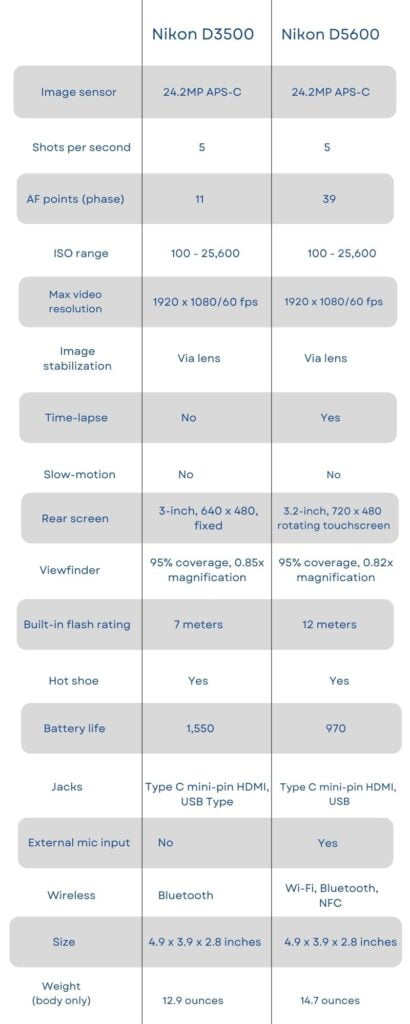
NikonD5600 vs NikonD3500 : Design
NikonD5600 vs NikonD3500: DSLR camera comparison, according to the design; Traditional DSLR form factors of the cameras are identical in that they have a very similar physical design. Even when operating with just one hand, the right-hand grips provide a secure hold. Even though the D5600 weighs in at 14.7 ounces, the D3500 weighs at 12.9 ounces; the difference is barely perceptible. The polycarbonate body of the D3500 and carbon fiber composite body of the D5600 distinguish them.
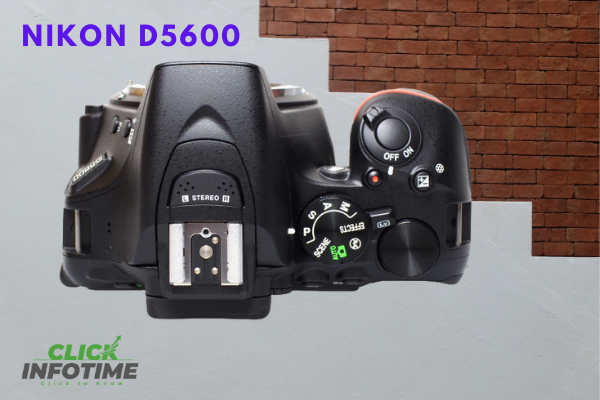
The rear LCD is where the two devices stand out from one another. For framing shots in live view mode while holding the camera up high or low, you’ll need to use the D3500’s primary 3-inch screen with a 640 x 480 pixels resolution, which does not tilt.
The 3.2-inch screen on the D5600 is a welcome upgrade, offering 720 x 480 resolution. The screen swivels to the left and rotates, giving you a lot of creative freedom when framing your shot. In addition, it folds into the camera body when not in use, protecting the screen from damage.
The touchscreen on the D5600 LCD makes it convenient to review and edit images. To quickly scroll through images, drag your finger across the interface’s frame-advance bar. To crop a photo, pinch-zoom into it and then touch to resize it.
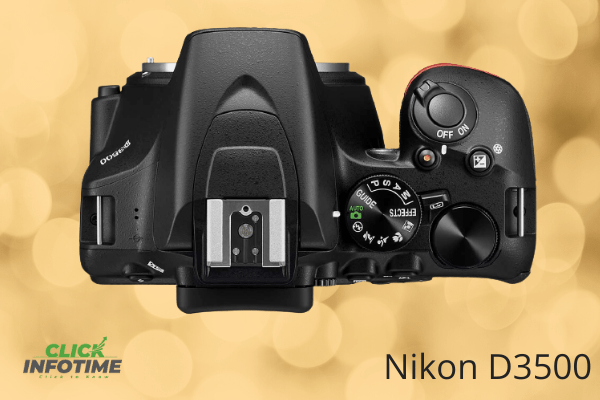
Because they’re digital single-lens reflex cameras, you’ll be framing shots primarily through the viewfinder. The D3500 and D5600 have identically sized pentamirror optical viewfinders. These cover 95% of the frame at a magnification of 0.85x and.82x, respectively.
Appropriateness as a Portrait Camera
https://www.photoworkout.com/nikon-d5600-vs-d3500/In terms of portrait photography, both cameras perform admirably. Single-point AF systems that lock focus instantly are ideal for portrait photography. However, the lens you are using has a significant impact on how well your camera can focus.
Since both cameras have a 24.2-megapixel APS-C sensor, the crop factor will apply to both. That’s 1.5x for Nikon APS-C cameras. As a result, a 50mm f/1.8 prime lens is equivalent to a 75mm f/2.8 lens in terms of focal length. So it’s almost ideal for taking pictures of people.
High Rate of shooting Continually
Both cameras shoot five frames per second when compared side by side with the Nikon D5600 and D3500. However, when it comes to continuous shooting speed, neither of the cameras has a significant advantage over the other.
They’re both good enough to take pictures in a day, whether it’s of a toddler playing or some wildlife. However, both cameras will fall short if the action picks up speed or if you want to capture a bird in mid-flight.
Vari-angle Rear LCD Screen
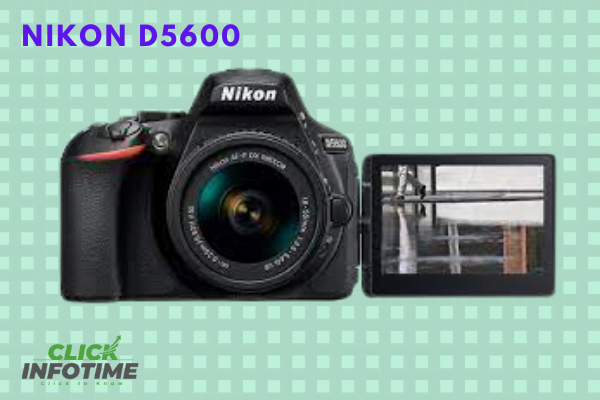
The LCD screen on the back of the camera is where you view your images and make menu selections. It serves as a conduit between your camera and the outside world.
Nikon’s D5600 rear LCD screen design will be a big plus for those interested in vlogging or experimenting with their photography. The screen is possible to flip up and down and swivel as well.

Weather Sealing
If you’re a frequent outdoor photographer, weather sealing is a must-have accessory, particularly in bad weather. It has essential gear for landscape photographers. Photographers who specialize in sports and wildlife also have this mindset.
Digital cameras’ delicate electronics don’t like the grime, moisture, and dust of the outdoors. However, weather-sealing is an incredibly pricey option. In addition, it significantly raises the final cost.
There aren’t many weather-sealed options for entry-level cameras. Although the D5600 and D3500 are excellent cameras, they are not helpful for harsh environments.
Consider buying a different camera if you’re going to be doing a lot of outdoor work and need the weather sealing.
NikonD5600 vs NikonD3500: Differences in Camera Interaction
The control layout is nearly identical on both cameras. Features include a video record button behind the shutter release and a large “LV” lever to the right of the mode dial that you can quickly flip to activate the live view.
Both are located on the back of the camera. The I quick-menu button, located to the right of each camera’s LCD, provides quick access to all of the camera’s most important settings, including everything from image quality to ISO.
The D3500’s smaller LCD allows for more button space on the camera’s back, including room for an additional button (which brings up the release mode options for continuous shooting or the self-timer).
The Guide Mode on the D3500 is beneficial for first-time photographers, as it guides them through the process of setting up, shooting, reviewing, and retouching their images. The Guide’s easy-to-follow and straightforward directions can be activated via the mode dial and are available in basic and advanced operation options. Everything from adjusting image quality to blending a portrait’s background is covered.
In-camera retouching options are plentiful with the D3500. Included are quick, automatic retouching (to bring out details in shadows), resizing, D-Lighting (to help bring out shadow details), red-eye correction, distortion control, and vignette correction. It is possible to use also photographic effects like black-and-white or monochrome.
You can use these filters after you’ve taken the photo and saved a new copy of it. When using Effects mode, you can make adjustments in real-time, right after taking the picture. Some of these effects can be used when In-camera retouching options on the D3500 are also quite extensive. Included are quick, automatic retouching (to bring out details in shadows), resizing, D-Lighting (to help bring out shadow details), red-eye correction, distortion control, and vignette correction. Photographic effects like black-and-white or monochrome are also possible to apply.
You can use these filters after you’ve taken the photo and saved a new copy of it. Alternatively, you can use the mode dial to access the effects while still taking pictures, allowing you to edit them in real-time. The same products can be used when shooting videos, with a few exceptions.
NikonD5600 vs NikonD3500: Image quality
The cameras’ essential components are the same in both models. Nikon’s Expeed 4 image processor and a 24.2MP image sensor are found in both cameras. This imaging combination is still effective even though it isn’t the most recent. The cameras’ color reproduction is crisp and accurate, and they have a wide dynamic range (fidelity ranging from very dark to very light elements).
The anti-aliasing filter, which was used to blur fine details (such as a finely repeating pattern) and cause distortions on lower-resolution image sensors, is no longer present on the sensor of each camera. Nikon realized that the AA filter was no longer required with the increase in resolution to 24MP, and as a result, their cameras now produce much sharper images. Even with the kit lens attached, each camera can capture more detail, especially around the edges of the image, than the kit lens allows.
Low-light performance is also excellent, thanks to the cameras’ design. At ISO 3200, images remain clear with accurate color and low pixel noise, making them suitable for 8×10-inch prints. When viewed at small sizes, noise at ISO 6400 is barely perceptible, such as on a Facebook status update. You should only use the higher ISO settings if you have no other option to get the photo.
Flash photography has a distinct advantage when photographing in low light. With a distance of up to 12 meters (39 feet), the D5600’s built-in flash can light a subject that’s quite a distance away. For example, the moment on the D3500 has a range of 7 meters (22 feet).
NikonD5600 vs NikonD3500: Autofocus and speed
The autofocus systems on the cameras do differ. The D3500’s AF sensor has just 11 autofocus points, whereas the D5600’s sensor has 39 autofocus points. Most still images, such as posed portraits or landscapes, won’t notice much difference if you do this. The D3500, on the other hand, may struggle in low-light situations or with subjects moving quickly. With the D5600, you’ll get better results when photographing fast-moving subjects, such as sports or wildlife.
If you’re into action photography, each camera can shoot up to five frames per second in JPEG format. That’s about what you’d expect to find in a budget DSLR. However, like the Canon EOS Rebel T8i, DSLRs costing more money have a maximum frame rate of 7 frames per second. Speeds of around 10fps are possible with mirrorless cameras, which have fewer moving parts and capture more frames per second.
NikonD5600 vs NikonD3500: Video quality
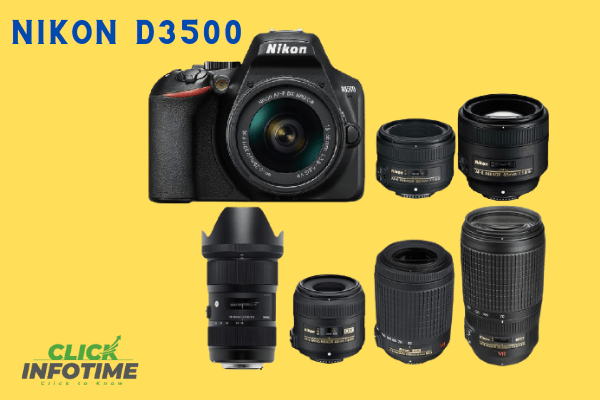
However, because neither camera has an image sensor with phase detection autofocus, it will have trouble focusing when used in an action situation. Video autofocus on most smartphones today is superior to either of these DSLRs. There are also only a few options for customizing the settings. For example, you can’t control the depth of field in video with either camera’s aperture.
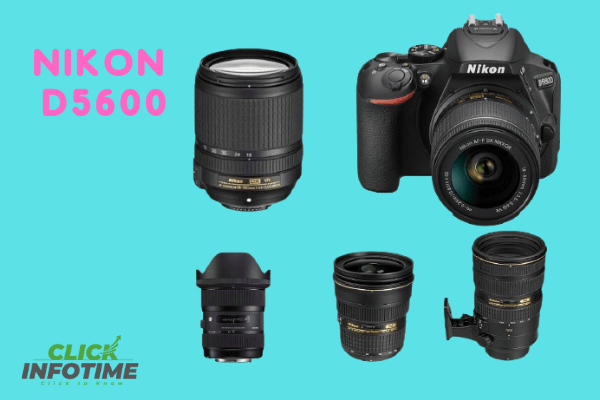
Because of its audio capabilities, the D5600 is a much better choice if you plan on shooting a lot of footage. To begin with, it has stereo microphones built-in, whereas the D3500 only has a mono mic. The microphones on the D5600 are also adjustable, so you can get the best sound quality when recording with the camera. In addition, a 3.5mm audio input on the D5600 enables you to register with better sound quality than the camera’s built-in microphone.
Time-lapse video is possible to capture on the D5600, not the D3500. For slow-motion playback, neither camera records at a high frame rate. However, neither of these cameras is the best option for shooting high-quality video. Instead, look at the Canon EOS Rebel SL3 DSLR or the Sony a6000 or a6100 mirrorless camera, both of which have 4K video capabilities.
NikonD5600 vs NikonD3500: How long does the battery last?
DLSR batteries have long been known for their longevity, and these two models don’t disappoint. The Nikon D5600 has a battery life of 970 shots, according to the CIPA standards tests. Even after a long day of shooting, your battery charge will remain whole. If 1550 shots sound excessive, consider the D3500’s 1550-shot endurance. You may be able to go a few days without having to recharge your device. You wouldn’t have to carry a spare battery if you took the D3500 on a multi-day backpacking trip.
Comparing the wireless capabilities of the Nikon D3500 and the Nikon D5600
Both cameras have built-in Bluetooth, so you can use Nikon’s free Snap Bridge app to transfer images to your Android or iOS device. For social media posting, 2MP versions of the image are more than sufficient. Photos transfer in about 10 seconds or less). However, if you try to send full-resolution pictures over Bluetooth, it will take up to a minute for each one to arrive. SnapBridge, on the other hand, can run in the background.
You can use your smartphone as a primary remote control for the D3500 with the Snap Bridge app. It’s possible to press the shutter button, but no preview of the photo will appear on the phone’s display.
Wi-Fi is also included in the D5600, making the camera’s remote control slightly more capable. For example, it is possible to preview an image, select the focus point, and then press the shutter button. But that’s it; things like shutter speed, aperture, and ISO can’t be changed. NFC is also included in the D5600, allowing Android devices to connect wirelessly to the camera simply by tapping it.
NikonD5600 vs NikonD3500: Which is right for you?
You can’t go wrong with either the NikonD5600 or the NikonD3500. Each camera offers excellent still-image quality. And the D3500 provides that quality at a more attractive price, which is why we have long named it the best entry-level DSLR camera. So if you are new to DSLR photography and looking for an economical entry point, this is the ideal camera for you. With some practice, you’ll be able to capture handsome portraits, gorgeous landscapes, and beautiful still lifes. (The Guide Mode will help you through the learning process.)
And the low price offers room to grow, as you can put the savings towards an extra lens or two. (One popular bundle, includes the 18-55mm kit lens and a 70-300m telephoto zoom for about $600.)
Action photography is the most compelling reason to upgrade to the D5600. Its 39-point autofocus system is perfect for tracking moving subjects than the D3500’s basic 9-point system. But you’re getting more than just a better AF system. In addition to that must-have feature, the D5600 also has several nice-to-haves, chief among them the variable-angle LCD touchscreen, making framing and especially reviewing photos much more convenient and enjoyable. If you can swing the higher price of the D5600, you will get your money’s worth.
https://clickinfotime.com/best-dslr-camera-for-beginners-2021/

